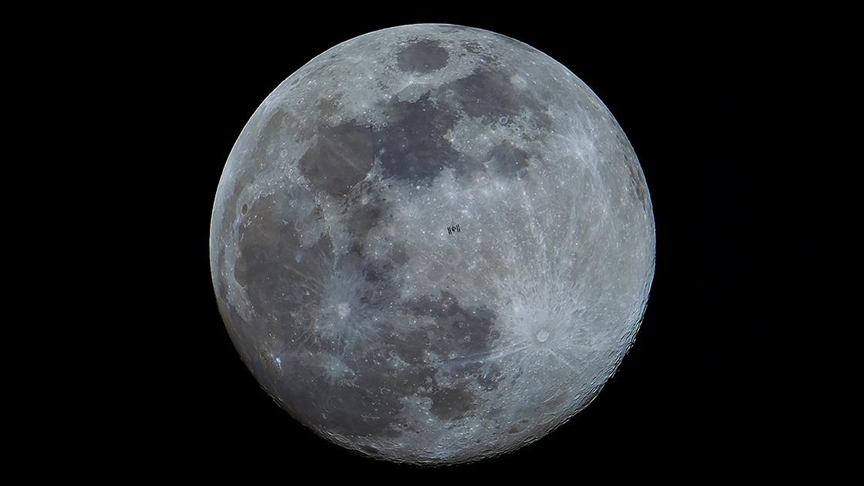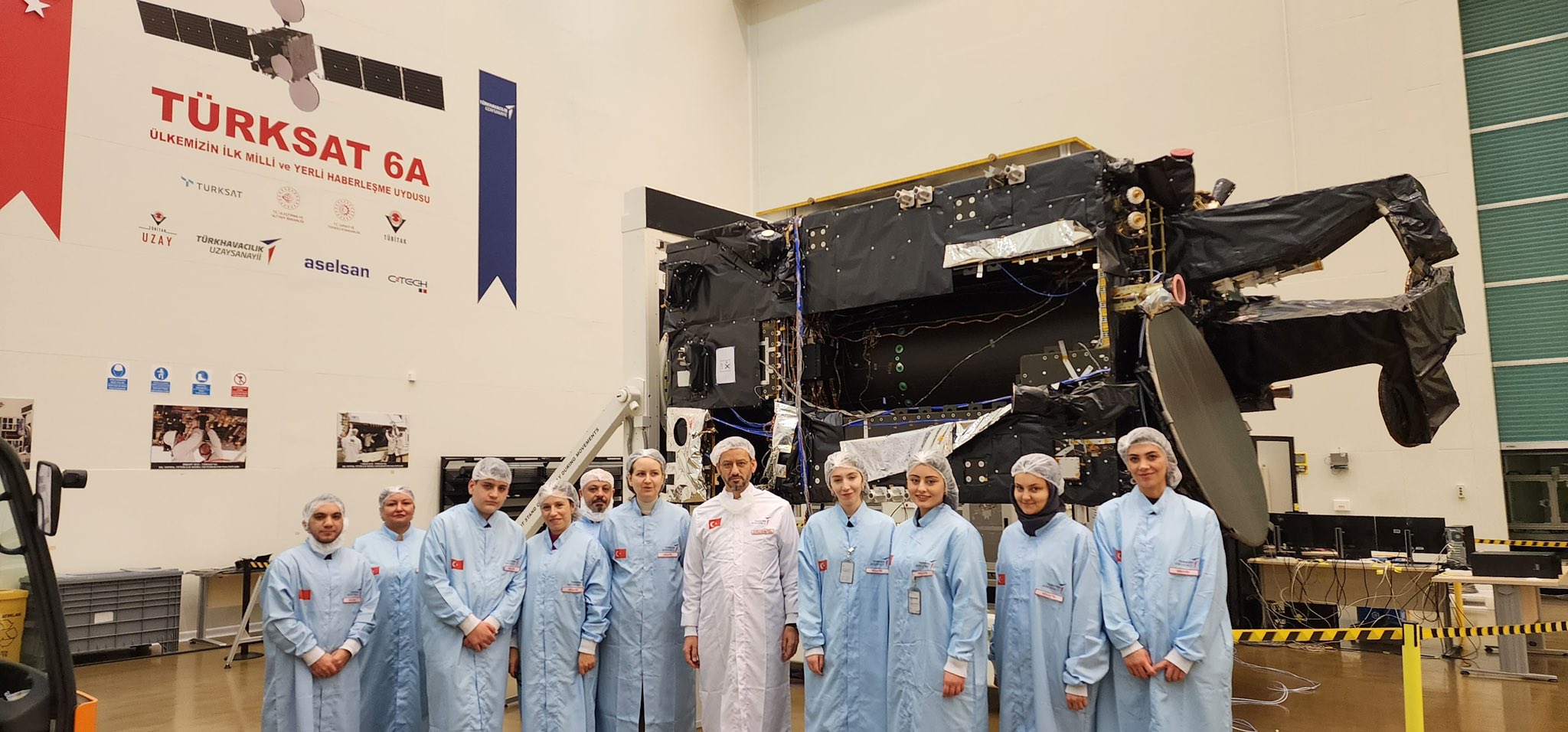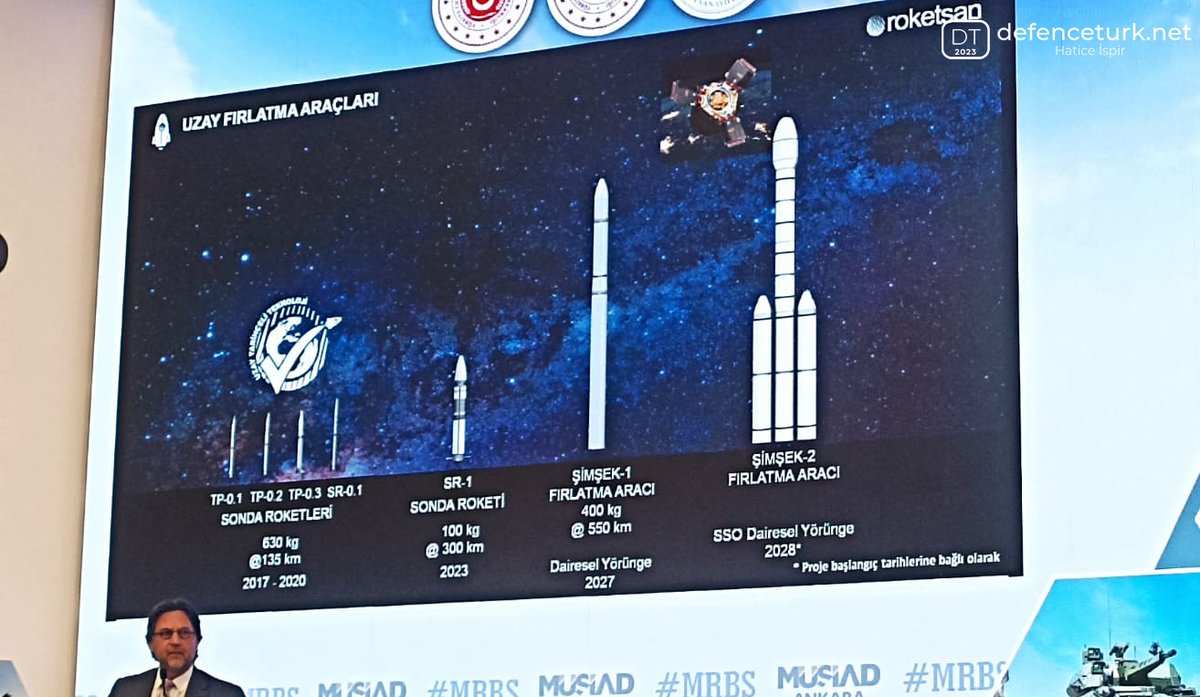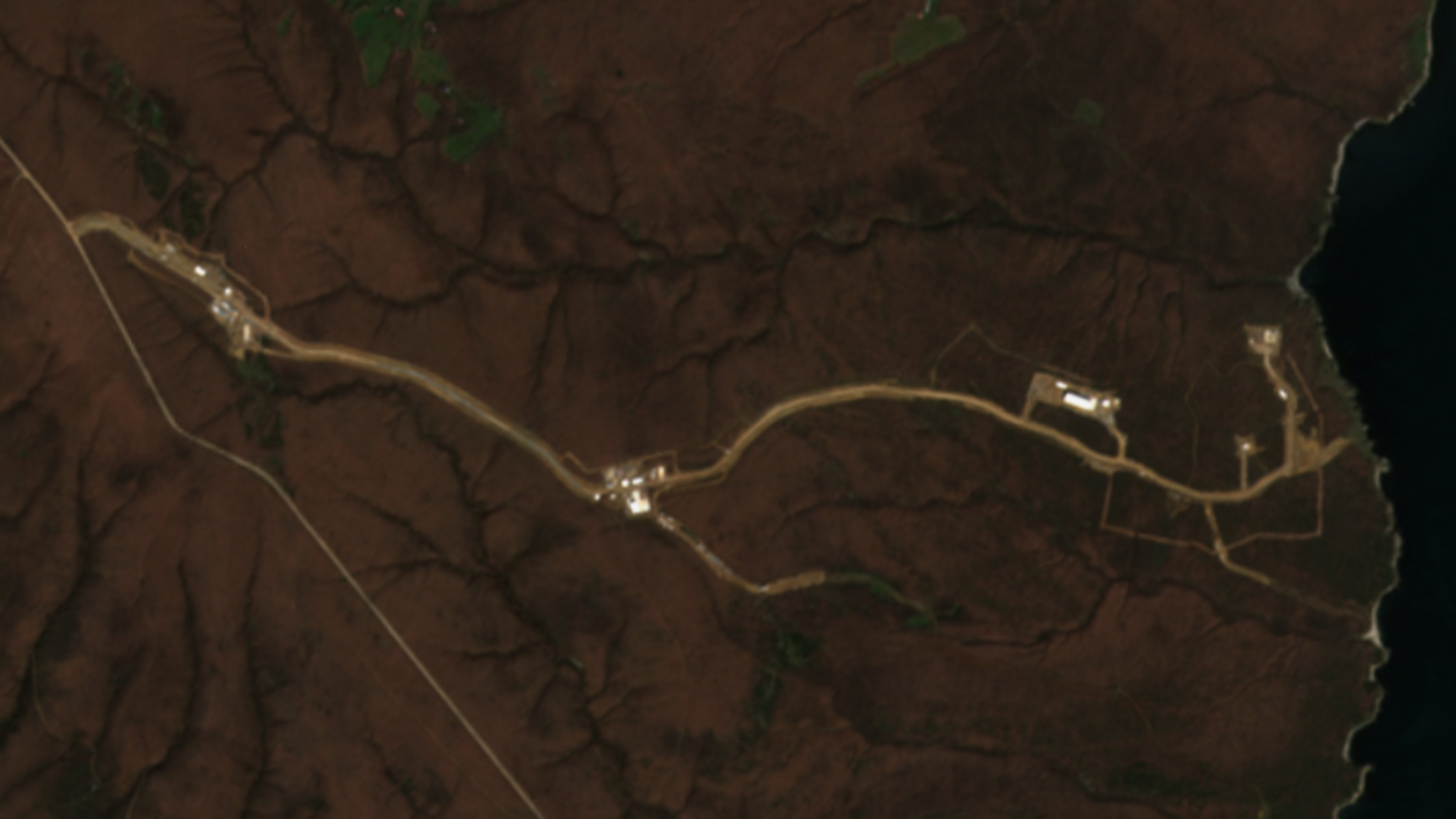There is also a project to develop high-resolution satellite constellations. And its budget is almost twice that of the İmece-1 project.
You are using an out of date browser. It may not display this or other websites correctly.
You should upgrade or use an alternative browser.
You should upgrade or use an alternative browser.
- Thread starter Cabatli_TR
- Start date
Yes, at 92 million USD. 2026 for İmece 2 and 2027 for İmece 3 completion also given. Wonder if launch costs are part of the project budget. İmece-1 launch cost figures are not public, but per SpaceX' publicly available data it may have cost as low as 4-5 million dollars.
A SpaceX engineer identified as Yiğit Tokbey died in a multi-vehicle collision near Orcutt. Tokbey was a Senior Launch Engineer for SpaceX. The exact cause of the crash is still under investigation.
May he rest in peace!A SpaceX engineer identified as Yiğit Tokbey died in a multi-vehicle collision near Orcutt. Tokbey was a Senior Launch Engineer for SpaceX. The exact cause of the crash is still under investigation.
Yes, at 92 million USD. 2026 for İmece 2 and 2027 for İmece 3 completion also given. Wonder if launch costs are part of the project budget. İmece-1 launch cost figures are not public, but per SpaceX' publicly available data it may have cost as low as 4-5 million dollars.
In addition, The resolution of Imece-2 and 3 satellites is stated as 0.5m

Türkiye'nin "uzay otobanı" yeni uydular ve Ay'a sert inişle hareketlenecek
TÜBİTAK Başkanı Prof. Dr. Mandal, İMECE-1 uydusunun ardından İMECE-2 ve 3'e odaklandıklarını belirterek, "2027'ye gelindiğinde 3 uydumuz eş zamanlı çalışacak. Türkiye de artık sadece uydusunu yapan değil, takım uydusunu yapan bir ülke olacak." dedi. - Anadolu Ajansı


Minister of Transport Abdulkadir Uraloğlu announced that the Türksat 6A satellite will be sent into space in June.

Bakan Uraloğlu: Milli ve yerli uydumuzu haziran ayında uzaya fırlatarak oradaki gücümüzü de artırmış olacağız
Ulaştırma ve Altyapı Bakanı Abdulkadir Uraloğlu, "Uzayda bulunan uydularımız var. 2024 yılında kendi ürettiğimiz milli ve yerli uydumuzu Amerika'ya göndererek ve haziran ayında uzaya fırlatarak oradaki gücümüzü de artırmış olacağız." dedi. - Anadolu Ajansı
We're excited to announce that we are getting successful results in Inter-Satellite Link (ISL) tests with our orbiting satellites Connecta T3.1 and Connecta T3.2. ISL plays a crucial role in our Connecta IoT network, promising significant enhancements to our satellite IoT services. Our tests for bidirectional transmission over S-band, spanning distances beyond 1000 km, have been successful. We plan to extend these tests across various distances and link speeds. We will publish findings from our in-orbit ISL experiments, so stay tuned for updates.
BaburKhan
Contributor
- Messages
- 534
- Nation of residence
-

- Nation of origin
-


GÖKTÜRK Satellite images commercialized
In 2023, 12,796,620 km² of orthoimagery was produced from 50 cm resolution GÖKTÜRK-1 satellite imagery and 95,884 km² from
 en.defenceturk.net
en.defenceturk.net
I respect your composure. I should curse SpaceX because if not for them, I wouldn't have read this thread and all the wonderful opinions here. I kinda envy how some people here have so much confidence while being so ignorant.+1 .
Fun to read some of the replies on this thread though lol.
None of them have been players in the field of space, whereas ISRO has accumulated over 5 decades of experience and knowledge. They've launched the first ASLV in 1987, around 4 decades earlier compared to when Turkiye was planning to launch the original solid-rocket MUFA. They are very respected both in launch vehicle technology as well as in field of space science and exploration. The progress in the latter has been a bit lacking compared to the former, but it's being given much more attention in the last decade.Not TUA, but whatever that might come out of an intense collaboration between Turkiye, Azerbaijan, Qatar, KSA, Malaysia and Indonesia.
Such an alliance would in a decade do marvelous things.
ISRO is working at a very slow pace. Their main pride is that they are doing things with small a budget
If the only thing you know about ISRO is that "they are doing things with small a budget" and if you think that's the only thing they could be proud about, you are oh so wrong.

The SR-1 Probe Rocket will launch this fall this year!
The SR-1 Sonde Rocket has a payload capacity of 100 kg.
Will SR-1 transition into becoming a small launch vehicle? 100kg to 300km is pretty good.
As @Cabatli_TR have stated before, that's 100kg to 300km apogee, not 300km LEO.Breaking! Turkiye’s micro launcher (100kg to 300km orbit) will launch by the end of 2023! - Ismael Demir
Turkiye is accelerating its space ambitions as I advocated earlier
the altitude will be increased to 400km later (probably in 2024).
This is really important developments!
SSB İsmail DEMİR:
"Micro Satellite Launch System MUFS will launch the first satellite in 2024"
ROKETSAN Advanced Technologies and Systems Asst. Dr. Sartuk KARASOY
"In our National Satellite Launch System, we are moving to a configuration that will carry a 400 kg satellite to an altitude of 550 km.
So if I am understanding it correctly, Turkiye originally planned to develop a solid rocket small-sat launcher called MUFA first and then proceed to a bigger, 1.5t to LEO launcher called UFA/SIMSEK powered by liquid fuel engine after that in 2030s, but have since then updated plans and scrapped solid fuel launch vehicle development plans, right?
From what I'm seeing, with their new plan MUFA/MUFS is powered by liquid fuel engine, has much bigger payload and could be scaled up using a common core booster configuration. Then later Roketsan will proceed to an even bigger liquid fuel rocket with more powerful stages and heavier payloads. I hope someone confirms if my understandings are right or wrong.
Either way, presuming that my understandings are right, I think the change is absolutely in the right direction. Quite a few countries have started their space rocket development using solid propellant motors, since that rids of the need to develop turbopumps and propellant tanks, avoid much of combustion instability problems and countless other difficulties, but in the end, they all had to develop liquid fuel rocket, most of them through technology transfer parallel to domestic technology development. There's no other way. For Turkiye and it's limited budget, better start earlier. I might even say it's already very late than what could've been.
True to certain extent, but there's some old space characteristics in what you are describing. New space has proved to work a bit different to a certain degree. Though I agree for the most part, especially when we are talking about Turkiye, since the progress in Turkiye right now are closer to basic problems, and at this stage you can't get things accelerated all that much with money alone. Moreover, they aren't investing all that much in the first place.Even if u spend more still you cannot compress the timeline in space projects unlike defence sector. A slow and steady start is always great.
I don't like the pace of Turkish space program as it is but by 2028 TUA is planning to put 1500kg payloads to orbits as high as 750km. This will be a milestone after which we may be looking at better numbers.
I would fast forward to 10 years into the future to get excited about our space endeavor.
Regardless of if you like the pace or not, that pace is actually very quick, I might even say impossible based on current progress.These timelines are disappointing. Turkiye must do things related to space faster. There is no time to waste. Maybe the solution is to partner up with Azerbaijan, Qatar, KSA, Malaysia and/or Indonesia to create a space program with enough financial backing and human resources. Indonesia is also perfectly located for launch, while R&D and subcomponent production could be based in Turkiye, Malaysia etc.
We are at the onset of the age of space colonization. The countries who fall behind in this race will be doomed, just like the nations who failed to participate in discovering new lands on earth (read Ottomans).
NASA is planning to start mining on the Moon in early 2030s. China probably in mid-2030s (both potentially subject to delays).
Turkiye and her alliance must aim to establish moon bases and mining stations in early 2040s the latest.
Therefore, the ambition should be;
1) 400kg to 550km orbit by 2025
2) 1.5t to 700km by 2027
3) manned spaceflights starting 2030
4) manned moon mission starting 2040
5) manned mars mission starting 2045
I know this is very ambitious with tight deadlines. But it has to be done in order for Turkiye and the Muslim world to not fall behind in this race. Maybe an acquisition of a small launch company could help kickstart things e.g. Firefly for example. (If the US government approves)
Personally, I have high hopes for Baykar to surprise us on the topic of space. Hopefully they can help accelerate things as well.
Based on their past relationship with Ukraine as well as TUA connections to Yuzhmash, I'd assume that SIMSEK development is seeing Ukrainian input. There's no shame in it since every other important players had more advanced partners at one stage. India and Europe (France), Japan and US (Delta), Korea and Russia (Naro). Else, there's no way SIMSEK launches by the end of this decade without any external help.
To be very honest, even with external help, I can't really see SIMSEK launching by 2027. That's 3 years from now! Development of small sat launch vehicle with over 400kg to 500km LEO payload capacity, would have yielded a lot of very visible progress by the time it's 3 years before launch. There hasn't been a single info about any kind of Turkish turbopump development, as well as other activities regarding launch vehicle development like propellant tanks development, test facility, nevermind the still-uncertain launch site problem. Some of the core components could be outsourced, yes, and quite a few new space companies developing rockets are doing so, of which some are precisely importing Yuzhmash turbopumps. TUA/Roketsan could go as far as taking the same route as KSLV-I Naro and co-develop the first stage with Ukraine. Even then, I find this silence regarding any detailed information very odd.
For reference, KSLV-I took 7 years from 2002 till 2009 for the first launch, and 11 years until 2013 for the the first successful launch. KSLV-II took even longer from 2010 til 2021, 11 years for the first launch. Budget for KSLV-II alone was around 1.6 billion USD. So all in all, it took 19 years and two programs to learn the basic system engineering of the launch vehicle and ground control systems, basic components like flight computer, propellant tanks and other structural components, payload system and fairing. Parallel to that, development of cryogenics system, a GG cycle turbopump and complete 1st stage and upper stage engines also took close to a decade and a half. Note that both Turkiye and Ukraine are MTCR members and would not be able to directly transfer engine/turbopump technologies. Of course, MTCR is not exactly legally binding and both countries could simply ignore it if they so choose to, but there would be serious implications.
To sum it up, I expect Ukraine to be serious partner in SIMSEK, and even then the current timelines are extremely ambitious/borderline impossible to be honest. Also, TUA needs way more funding to fully realize Turkish space ambitions.
The biggest problem was the lack of long-term planning pre-2018. As I've said above, Turkiye should've started developing space launch vehicle and as an extent should've had an actual space plan much sooner I feel. The establishment of dedicated space agency was also quite late. Obviously the history of formal Turkish space development itself started only relatively recently, so it's natural that there's much to be desired. TUA and the 10 year plan from 2021 is a good starting point at least.So we're not launching anything to orbit for five more years at best. Yaaay! We send probe rockets to space in 2017 and actual orbit is reached after a full decade. And that is if everything goes according to the plan. The only silver lining for me is that they upgraded the payload from 100kg to 400kg. It's still very little for LEO but at least quadrupled from 100kg.
Before the problem of rocket size, SIMSEK is simply unsuitable to be used as a missile in today's military environment since it is going to be cryogenic. There's a reason that liquid fueled military rockets were all powered by hypergolics once the rocket, aircraft and reconnaissance/surveillance technology matured. Cryogenic missiles were only plausible because the situation allowed for it. Also, Turkiye was already developing SR 1.0 by the time you've posted this, which is much more suitable technology for military use.SIMSEK 1 seems huge and tall. For military use it needed to be scaled down and miniaturized. Which may take 3/4 years more.
Anyway, i don't think it will have any significant geopolitical effect with only 400 kg conventional warhead. ( Or even it will be an economically wise choice. ) And On top of that, systems like S500, THAAD, DEVID SLING, ARROW II and ARROW III will able to shoot it down. So, to have a notable 'geopolitical effect' on europe, russia and the middle eastern state actors, turkey need an HGV capability with 2000km range. Something similar to chinese DF17 or us LRHW.
Other than that, greece and israel or other regional actors are already well within range of turkish air force. And ( the navy in the near future with the introduction of gazgin )
Unless they are going to develop a turbopump, they are not going orbital, nor does that actually seem to be their goal. For now, they seem to be company much more akin to Ursa Major.Forgive me for my ignorance but what is DeltaV's end goal? Do they want to develop an orbital launch vehicle? Or is this a test program for the hybrid engine? Or something else? Their website doesn't have any info. It's written "under construction".
Hybrid rocket motor in action in space surely is a notable progress, but unfortunately not so much a revolution that would allow Turkiye to actually close the gap in meaningful amount to the front runners. If there's any serious commitment, they need a turbopump or electropump at the very least.It's a revolution. We will close the gap in the field of space at a speed that no one can predict.
Performance of hybrid rocket in general is much inferior compared to liquid rocket engines, especially in terms of ISP. Add to that the lack of expertise in hybrid rockets, compared to all the various developments all around the world using hypergolic and cryogenic propellants which means there's a huge gap in data. Also, complex geometry grain manufacturing is pain in the ass, which is only being addressed more recently thanks to 3D printing (which is very immature as of now) and higher regression rate fuel like paraffin which forgoes the need for complex grain geometry to certain extent. Also there's the problem of how you will drive the oxidizer pump, since it's needed if you want to actually build an orbital launch vehicle with hybrid rockets. Most new start companies using hybrid rockets are going to use electropumps, and electropump powerpacks have a very clear limit in terms of its performance. See Rocket Lab transitioning into turbopump to know what I mean.Is there a reason why no one else has then that before?
Space launch activities of Türkiye goes hand in hand with missile development activities so there is a dual drive in this field. I wouldn't compare Türkiye's efforts of today with past decades of other developers as industry tend to move faster today than before. Rapid prototyping and realistic simulation tools are enabling factors. Also continuing political pressure keeps the ship moving. Add to that multiple space efforts that will be customers to provided services there is a fostering ecosystem for progress. We will have to wait and see what will actually happen but pressure from the audience can be a driving factor too.Before the problem of rocket size, SIMSEK is simply unsuitable to be used as a missile in today's military environment since it is going to be cryogenic. There's a reason that liquid fueled military rockets were all powered by hypergolics once the rocket, aircraft and reconnaissance/surveillance technology matured. Cryogenic missiles were only plausible because the situation allowed for it. Also, Turkiye was already developing SR 1.0 by the time you've posted this, which is much more suitable technology for military use.
Unless they are going to develop a turbopump, they are not going orbital, nor does that actually seem to be their goal. For now, they seem to be company much more akin to Ursa Major.
Hybrid rocket motor in action in space surely is a notable progress, but unfortunately not so much a revolution that would allow Turkiye to actually close the gap in meaningful amount to the front runners. If there's any serious commitment, they need a turbopump or electropump at the very least.
Performance of hybrid rocket in general is much inferior compared to liquid rocket engines, especially in terms of ISP. Add to that the lack of expertise in hybrid rockets, compared to all the various developments all around the world using hypergolic and cryogenic propellants which means there's a huge gap in data. Also, complex geometry grain manufacturing is pain in the ass, which is only being addressed more recently thanks to 3D printing (which is very immature as of now) and higher regression rate fuel like paraffin which forgoes the need for complex grain geometry to certain extent. Also there's the problem of how you will drive the oxidizer pump, since it's needed if you want to actually build an orbital launch vehicle with hybrid rockets. Most new start companies using hybrid rockets are going to use electropumps, and electropump powerpacks have a very clear limit in terms of its performance. See Rocket Lab transitioning into turbopump to know what I mean.
Like I've said above, new MUFS is no longer dual use technology anymore since it changed to cryogenic liquid propellant rocket. That was only true with SR 1.0 and the older MUFA/MUFS design. Turkiye is basically starting from scratch and is embarking on developing civilian only launch vehicle technology.Space launch activities of Türkiye goes hand in hand with missile development activities so there is a dual drive in this field. I wouldn't compare Türkiye's efforts of today with past decades of other developers as industry tend to move faster today than before. Rapid prototyping and realistic simulation tools are enabling factors. Also continuing political pressure keeps the ship moving. Add to that multiple space efforts that will be customers to provided services there is a fostering ecosystem for progress. We will have to wait and see what will actually happen but pressure from the audience can be a driving factor too.
If anything new space is doing, they're showing how vague rapid prototyping and digital twin are without fundamentals. Building fundamentals is basically what TUA and Roketsan are doing right now. No shortcut here.
Political pressure without adequate funding is also just as vague. Turkiye has a lot of bright minds, capable engineers both in and outside the country, so brain pool is not the problem, but I should question gov commitment since their budgets are still very tiny, especially for a simultaneous moon probe and launch vehicle development.
Yes for waiting for details, but no, there should be quite a lot of things already done by now for a liquid propellant MUFS (SIMSEK) to actually launch in 2027, that's just how things are.
We will see; we saw a different picture than predicted for the TFX project which is now Kaan, we may as well see a fast lane progress in this field too as funding issue can be solved quickly given a clear path to success is proposed by developers.Like I've said above, new MUFS is no longer dual use technology anymore since it changed to cryogenic liquid propellant rocket. That was only true with SR 1.0 and the older MUFA/MUFS design. Turkiye is basically starting from scratch and is embarking on developing civilian only launch vehicle technology.
If anything new space is doing, they're showing how vague rapid prototyping and digital twin are without fundamentals. Building fundamentals is basically what TUA and Roketsan are doing right now. No shortcut here.
Political pressure without adequate funding is also just as vague. Turkiye has a lot of bright minds, capable engineers both in and outside the country, so brain pool is not the problem, but I should question gov commitment since their budgets are still very tiny, especially for a simultaneous moon probe and launch vehicle development.
Yes for waiting for details, but no, there should be quite a lot of things already done by now for a liquid propellant MUFS (SIMSEK) to actually launch in 2027, that's just how things are.
BaburKhan
Contributor
- Messages
- 534
- Nation of residence
-

- Nation of origin
-

When will be Göktürk- III SAR Satelitte ready to enter in Space ? I read from different Sources, some write about 2025 other 2028. This Capabillity is very important to track Time Critical Targets.
This Animation should just show how important this Capabillity is.
This Animation should just show how important this Capabillity is.
İğneada Launch Site Progress
Image-1 : 08.03.2021

Image-2 : 17.03.2024

Image-1 : 08.03.2021

Image-2 : 17.03.2024

BaburKhan
Contributor
- Messages
- 534
- Nation of residence
-

- Nation of origin
-

İğneada Launch Site Progress
Image-1 : 08.03.2021

Image-2 : 17.03.2024

I wait for especially where the area for the spotters will be located





